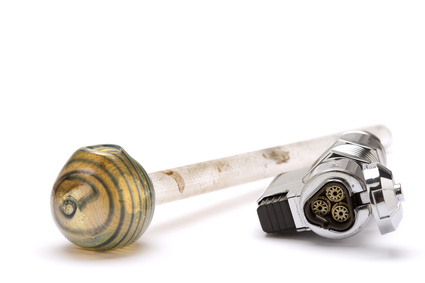Over the past few days, the mayor of Toronto has been receiving some unwanted attention. It’s alleged that he smoked crack cocaine with known drug dealers and criminals. Since one of my specializations is in addictions counselling, I couldn’t help but use this opportunity to do a little bit of education on the power of drugs, and in particular, of crack cocaine.

The name ‘crack’ comes from the crackling and popping sound the drug makes when it’s being heated and smoked.
Cocaine comes from the coca leaf, which has been around for millions of years. In 1861, the active ingredient (cocaine hydrochloride) was isolated from the plant. Today, this ingredient is still used for its anesthetic and numbing properties in surgeries and minor ailments.
In 1981, street chemists discovered an easy way of turning cocaine into its base form. Through this method, cocaine could be smoked. The name “crack” comes from the crackling sound the drug makes when its being heated in a pipe.
When crack was first introduced into the U.S., many of its early users were young white professionals – people who had already been using cocaine. However, as dealers realized they could sell small chunks or “rocks” for as low as $5, it soon became popular in less affluent and impoverished neighbourhoods. By the late 80’s, crack cocaine had reached epidemic proportions.
As a general rule, the more quickly a drug reaches your brain, the more addictive it is. When a drug is snorted, it reaches the brain in about 3 minutes. When it’s injected, it reaches the brain in about 15 – 30 seconds. But, when a drug is smoked, it reaches the brain in about 7 – 10 seconds. This is why smoking crack is more addictive than snorting or injecting cocaine: it reaches the brain more quickly than any other method.
“It tastes like more because that is all you want, more. Not like if you smoke a joint, you high. You ain’t looking for no more but this, this is a trip because this little bitty thing that costs $20 is gone in 3 minutes, maybe 5.” 36-year-old recovering crack smoker (Inaba and Cohen, 2004, pg. 99).
Darryl Inaba and William Cohen – two substance abuse experts – have written extensively on the topic of drugs and pharmacology. Here are a few reasons they cite for why people use stimulants like cocaine, crack, and amphetamines.
- The drugs mimic pleasurable body functions. People feel confident, euphoric, and stimulated when using these types of drugs. These drugs stimulate the pleasure and reward centres in the brain.
- They want to avoid the crash. When people come down from a stimulant drug (like crack, cocaine, or methamphetamine), they feel intensely depressed. So, they take more of the drug to prevent this from happening.
- They want to block out life’s problems. Whether its stress, a hated job, a difficult relationship, or loneliness, drugs are a way to block out personal worries.
- Hereditary predisposition. Some people’s biology puts them at risk for experiencing certain types of drugs more intensely than other people. In a way, some people are ‘pre-sensitized’ to cocaine and other stimulants.
- Cocaine, in and of itself, creates an intense craving. Stimulant drugs lead the person to keep injecting, snorting, smoking and binging for days at a time, often without the need for sleep. Alcohol and painkillers, on the other hand, can cause the person to pass out.
In the end, I think it’s important to remember that some people feel trapped and imprisoned by these drugs. They may think they’ve got it under control, but when they are prepared to sacrifice their image, reputation, and almost everything they’ve worked for, it puts the power of this disease into perspective.
Hoping this bit of psychology helps in understanding addiction…
Here are some links related to this post:
- Inaba and Cohen (2011). Uppers, Downers, and All Arounders: Physical and mental effects of psychoactive drugs (Seventh Edition). This is an excellent book. I’ve got the fifth edition and refer to it regularly.
- Addiction: It’s more than just a choice
- Psychological Model for Understanding Addiction
- Social Theory of Addictions: The influence of learning and environment
- Addiction from a Spiritual Perspective
- Information on over 40-commonly abused drugs.

